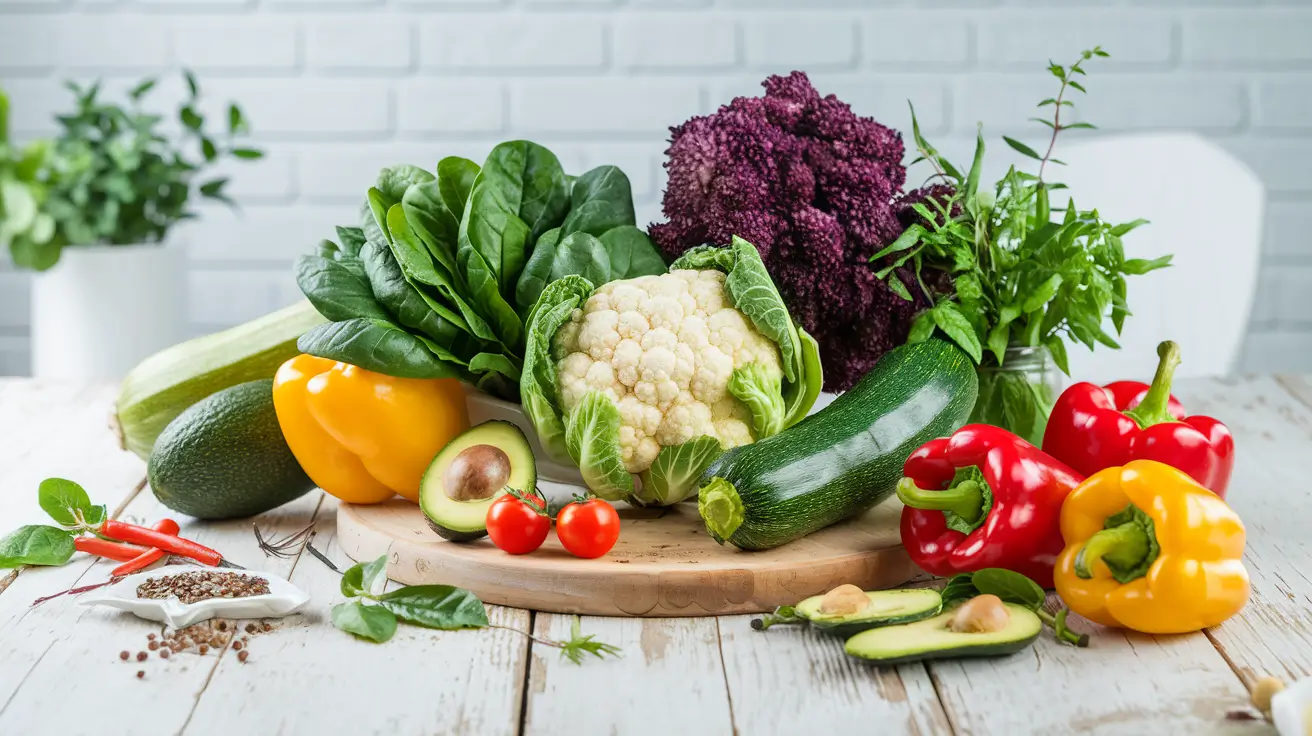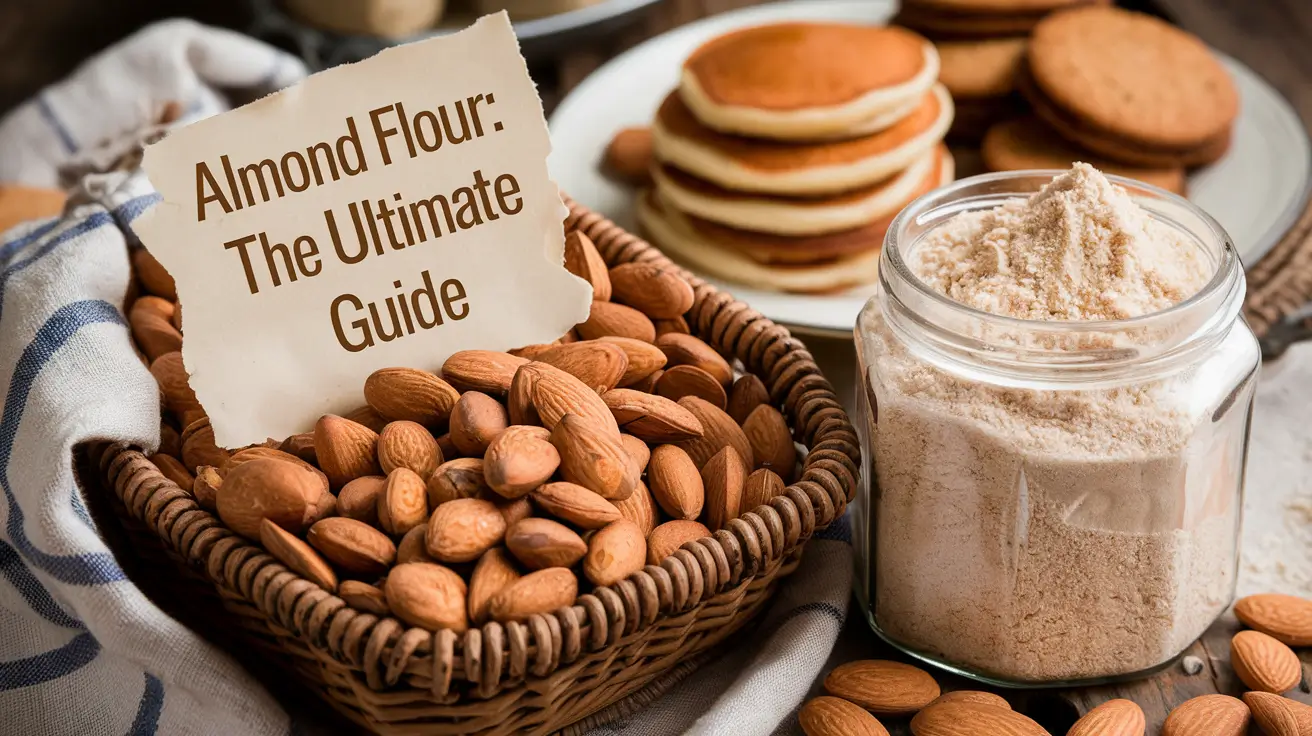The Keto Veggie Revolution: Mastering Low-Carb Greens for Optimal Health

Introduction: Embracing the Green Side of Keto
Welcome to the vibrant world of keto-friendly vegetables! If you’ve ever thought that “keto” and “veggies” were contradictory terms, prepare to have your mind—and your plate—transformed. This guide is your passport to a colorful, nutrient-packed keto journey that proves you can have your greens and eat them too!
The ketogenic diet has gained immense popularity for its potential to promote weight loss, improve mental clarity, and boost overall health. However, many newcomers to keto find themselves puzzled about how to incorporate vegetables into their low-carb lifestyle. Fear not! This comprehensive guide will show you how to make vegetables the star of your keto show, all while keeping your carb count in check and your taste buds dancing with joy.
Section 1: Keto 101 – Why Veggies Matter
The Keto Equation: Fat + Protein – Carbs = Success
The ketogenic diet isn’t just about bacon and butter. It’s a precise balancing act that requires careful attention to your macronutrient intake. Here’s the typical breakdown:
- 70% fat: Your new best friend and primary fuel source
- 25% protein: The muscle maintainer and satiety promoter
- 5% carbs: The tricky part (where our veggie heroes come in!)
This macronutrient ratio is designed to shift your body into a state of ketosis, where it primarily burns fat for fuel instead of carbohydrates. But achieving this balance doesn’t mean you have to sacrifice nutrient-dense vegetables. In fact, the right veggies are crucial for maintaining optimal health on a keto diet.
Ketosis: Your Body’s Superpower Mode
Imagine your body as a hybrid car. Normally, it runs on carbs (gasoline). But in ketosis, it switches to fat (electricity) for fuel. This metabolic state offers several potential benefits:
- Increased energy: Many people report steady, long-lasting energy throughout the day.
- Mental clarity: Some studies suggest improved cognitive function and focus.
- Fat burning: Your body becomes more efficient at using stored fat for energy.
- Blood sugar stability: Reduced carb intake can lead to more stable blood glucose levels.
- Reduced inflammation: Some research indicates potential anti-inflammatory effects.
Vegetables: The Unsung Heroes of Keto
Low-carb veggies are like the Swiss Army knives of your keto toolkit. They offer a multitude of benefits that are essential for thriving on a ketogenic diet:
- Nutrient density: Vegetables pack a powerful punch of vitamins, minerals, and antioxidants without adding excessive carbs.
- Fiber: Essential for maintaining digestive health and promoting feelings of fullness.
- Microbiome support: The fiber and nutrients in vegetables feed beneficial gut bacteria.
- Alkalizing effects: Many vegetables help balance the body’s pH, potentially offsetting the acidic effects of high protein intake.
- Hydration: Many low-carb veggies have high water content, supporting overall hydration.
- Versatility: From raw to roasted, vegetables offer endless culinary possibilities to keep your keto diet exciting and satisfying.
Section 2: The Keto Veggie All-Stars
Top 15 Low-Carb Veggie Superstars
- Spinach: The Iron Giant
- Carbs: 1g per cup (raw)
- Superpowers: Iron boost, vitamin K bonanza, folate for cell health
- Keto Hack: Blend into smoothies for a secret green punch or use as a base for salads
- Recipe Idea: Creamy spinach and artichoke dip with keto-friendly veggie sticks
- Cauliflower: The Great Impersonator
- Carbs: 3g per cup (raw)
- Superpowers: Vitamin C, versatility champion, cancer-fighting compounds
- Keto Hack: Rice it, mash it, pizza-crust it!
- Recipe Idea: Cauliflower mac and cheese with crispy bacon topping
- Zucchini: The Noodle Ninja
- Carbs: 3g per cup (sliced)
- Superpowers: Manganese for metabolism, low-calorie volume food, vitamin A
- Keto Hack: Spiralize for guilt-free pasta nights or use in low-carb baking
- Recipe Idea: Zucchini lasagna with ricotta and ground beef
- Avocado: The Creamy Dream
- Carbs: 2g per 1/2 avocado
- Superpowers: Healthy fats, potassium powerhouse, fiber for digestive health
- Keto Hack: Nature’s mayo—spread it, dip it, love it
- Recipe Idea: Avocado chocolate mousse for a decadent keto dessert
- Brussels Sprouts: The Mighty Minis
- Carbs: 6g per cup (cooked)
- Superpowers: Vitamin K, cancer-fighting compounds, high in antioxidants
- Keto Hack: Roast with bacon for a side dish that steals the show
- Recipe Idea: Shaved Brussels sprout salad with lemon-dijon dressing
- Broccoli: The Tree of Life
- Carbs: 4g per cup (raw)
- Superpowers: Fiber fullness, detox support, vitamin C boost
- Keto Hack: Steam, then smother in cheese sauce for veggie indulgence
- Recipe Idea: Broccoli and cheddar soup with crispy prosciutto topping
- Mushrooms: The Meaty Treats
- Carbs: 2g per cup (raw)
- Superpowers: Vitamin D (when sun-exposed), umami flavor, B vitamins
- Keto Hack: Stuff with cream cheese and bacon for the ultimate keto appetizer
- Recipe Idea: Portobello mushroom pizzas with mozzarella and basil
- Asparagus: The Elegant Spears
- Carbs: 2g per 6 spears
- Superpowers: Folate for cell health, natural diuretic, vitamin K
- Keto Hack: Wrap in prosciutto for a fancy, keto-friendly appetizer
- Recipe Idea: Grilled asparagus with hollandaise sauce
- Bell Peppers: The Rainbow Vessels
- Carbs: 4-7g per pepper (depending on color)
- Superpowers: Vitamin C overload, antioxidant variety, eye health support
- Keto Hack: Use as low-carb boats for taco fillings
- Recipe Idea: Philly cheesesteak stuffed peppers
- Celery: The Crunch Master
- Carbs: 1g per stalk
- Superpowers: Ultra-low calorie, natural electrolytes, anti-inflammatory
- Keto Hack: The perfect vehicle for high-fat dips and spreads
- Recipe Idea: Buffalo chicken celery boats
- Kale: The Nutrient Powerhouse
- Carbs: 6g per cup (raw)
- Superpowers: Vitamin K, antioxidants, calcium for bone health
- Keto Hack: Massage with olive oil to soften for salads
- Recipe Idea: Crispy kale chips with parmesan and garlic
- Cabbage: The Versatile Veteran
- Carbs: 3g per cup (shredded)
- Superpowers: Vitamin C, gut health support, potential cancer-fighting properties
- Keto Hack: Use as a wrap for sandwiches or burgers
- Recipe Idea: Low-carb egg roll in a bowl with sesame oil and green onions
- Cucumbers: The Cool Hydrators
- Carbs: 2g per 1/2 cup (sliced)
- Superpowers: Hydration boost, vitamin K, anti-inflammatory properties
- Keto Hack: Use as crunchy dippers for high-fat dips
- Recipe Idea: Greek cucumber salad with feta and olives
- Eggplant: The Meaty Vegetable
- Carbs: 3g per cup (cubed)
- Superpowers: Fiber, potassium, nasunin for brain health
- Keto Hack: Use as a low-carb lasagna noodle substitute
- Recipe Idea: Eggplant parmesan with marinara and mozzarella
- Radishes: The Peppery Bites
- Carbs: 2g per cup (sliced)
- Superpowers: Vitamin C, detoxifying properties, low in calories
- Keto Hack: Roast for a potato-like side dish
- Recipe Idea: Butter-roasted radishes with fresh herbs
Section 3: Keto Veggie Mastery – Tips and Tricks
The Art of Veggie Prep
- Roasting Revolution:
- Toss any veggie in olive oil, salt, and pepper. Roast at 400°F (200°C) until edges are crispy. Instant veggie candy!
- Pro tip: Add garlic powder, paprika, or Italian herbs for extra flavor without adding carbs.
- Spiralize Everything:
- Not just zucchini—try spiralizing bell peppers, cucumbers, or even broccoli stems for unique noodle alternatives.
- Invest in a good quality spiralizer for consistent results.
- Blanch for Batch Prep:
- Quick-boil veggies, then freeze. You’ll have keto sides ready in minutes all week long.
- Blanching helps preserve color, texture, and nutrients.
- Fermentation Station:
- Make your own sauerkraut or kimchi. Your gut will thank you, and your taste buds will dance!
- Fermented veggies are lower in carbs and higher in probiotics.
- Air Fryer Magic:
- Use an air fryer for crispy, low-carb veggie chips or fries.
- Try kale, zucchini, or even radish chips for a crunchy snack.
- Veggie Noodle Mastery:
- Beyond zucchini noodles, try cucumber, daikon radish, or kohlrabi for variety.
- Briefly sauté or enjoy raw for the best texture.
- Grilling Goodness:
- Grilled vegetables develop a smoky flavor that can satisfy meat cravings.
- Use a grilling basket for smaller veggies to prevent them from falling through the grates.
Sneaky Veggie Strategies
- The Great Disguise:
- Puree cauliflower into smoothies or sauces for hidden nutrients.
- Add riced cauliflower to ground meat dishes for extra volume and nutrients.
- Veggie Desserts:
- Use zucchini in keto baking for moist, low-carb treats.
- Try avocado-based chocolate mousse or brownies for a creamy, healthy dessert.
- Savory Breakfast Boost:
- Add spinach or kale to your morning eggs for a nutrient kick-start.
- Try a breakfast “bowl” using a halved bell pepper as the container.
- Vegetable-Based Dips:
- Blend roasted eggplant or zucchini into dips for a low-carb, high-flavor spread.
- Use vegetable-based dips as a sauce for meats or other veggies.
- Cauliflower Power:
- Use cauliflower as a base for pizza crust, wraps, or even hash browns.
- Blend cauliflower into smoothies for added creaminess without the carbs.
- Lettuce Wraps:
- Use large lettuce leaves as wraps for sandwiches or tacos.
- Butter lettuce and romaine hearts work well for different wrap styles.
- Veggie Chips:
- Thinly slice zucchini, eggplant, or radishes and dehydrate or bake for crispy chips.
- Season with various herbs and spices for different flavor profiles.
Section 4: Troubleshooting Your Keto Veggie Journey
FAQ: Veggie Edition
Q: “Help! I’m craving potato chips!”
A: Try making kale chips or zucchini chips. Same crunch, fraction of the carbs. Season with nutritional yeast for a cheesy flavor without the dairy.
Q: “I miss my sweet veggies like carrots and sweet potatoes.”
A: Roast bell peppers or tomatoes to bring out their natural sweetness without the carb overload. Also, a small amount of butternut squash can satisfy that sweet veggie craving without breaking your carb bank.
Q: “How do I deal with veggie boredom?”
A: Experiment with herbs and spices. Curry powder on cauliflower or za’atar on zucchini can transport your taste buds around the world! Also, try new preparation methods – spiralizing, grilling, or air frying can give familiar veggies a whole new personality.
Q: “I’m worried about getting enough fiber on keto. How can veggies help?”
A: Focus on high-fiber, low-carb options like broccoli, cauliflower, and leafy greens. Adding chia seeds or flaxseeds to your veggie dishes can also boost fiber intake without adding many net carbs.
Q: “Can I eat tomatoes on a keto diet?”
A: Yes, in moderation. Tomatoes are slightly higher in carbs but packed with nutrients. Use them as a flavor accent rather than a main ingredient. Cherry tomatoes are great for portion control.
Q: “I’m vegetarian and considering keto. Is it possible?”
A: Absolutely! Focus on low-carb veggies, healthy fats like avocado and olive oil, and plant-based proteins like tofu and tempeh. Eggs and dairy can also be included if you’re lacto-ovo vegetarian.
Q: “How can I increase my fat intake while eating more veggies?”
A: Dress your veggies with olive oil-based dressings, add a pat of butter to steamed veggies, or sprinkle with cheese. Dips made with avocado or full-fat Greek yogurt are also great options.
Overcoming Common Keto Veggie Challenges
- Carb Creep:
- Solution: Use a food tracking app to monitor your veggie carb intake.
- Tip: Focus on very low-carb options like leafy greens for the bulk of your veggie intake.
- Digestive Issues:
- Solution: Gradually increase your fiber intake to allow your digestive system to adjust.
- Tip: Consider taking a probiotic supplement to support gut health during the transition.
- Electrolyte Imbalance:
- Solution: Include potassium-rich, low-carb veggies like avocado and spinach.
- Tip: Don’t shy away from salting your veggies to replace sodium lost on keto.
- Meal Prep Overwhelm:
- Solution: Batch cook roasted veggies or make large salads that last several days.
- Tip: Keep pre-cut veggies and dip on hand for quick snacks.
- Social Situations:
- Solution: Offer to bring a keto-friendly veggie dish to gatherings.
- Tip: Most restaurants can accommodate requests for extra veggies instead of high-carb sides.
Section 5: Advanced Keto Veggie Strategies
Seasonal Keto Veggie Rotation
Embracing seasonal vegetables not only ensures you’re getting the freshest, most nutrient-dense produce, but it also adds variety to your keto diet throughout the year. Here’s a quick guide to seasonal low-carb veggies:
- Spring: Asparagus, artichokes, spinach, radishes
- Summer: Zucchini, bell peppers, cucumbers, tomatoes (in moderation)
- Fall: Brussels sprouts, cauliflower, pumpkin (in small amounts), kale
- Winter: Cabbage, celery, collard greens, turnips
Rotating your veggie choices seasonally ensures a wider range of nutrients and keeps your meals exciting year-round.
Keto Veggie Meal Planning
Effective meal planning is key to maintaining a varied and nutritious keto diet. Here are some strategies to incorporate more veggies into your weekly meal plan:
- Meatless Mondays: Challenge yourself to create keto-friendly vegetarian meals once a week.
- Veggie-Based Breakfasts: Start your day with a veggie-packed omelet or frittata.
- Soup and Salad Dinners: Make a big batch of low-carb veggie soup or a hearty salad for quick, easy dinners.
- Snack Prep: Prepare veggie sticks and keto-friendly dips for the week ahead.
- Double the Veggies: Whatever recipe you’re making, try doubling the vegetable content.
Advanced Cooking Techniques for Keto Veggies
Take your keto veggie game to the next level with these advanced cooking techniques:
- Sous Vide: This method ensures perfectly cooked veggies while retaining nutrients.
- Smoking: Add depth of flavor to sturdy veggies like cauliflower or eggplant.
- Pickling: Make quick pickles with cucumbers, radishes, or cauliflower for a tangy, low-carb treat.
- Vegetable Confit: Slow-cook veggies in oil for a luxurious texture and flavor.
- Dehydrating: Create veggie chips or “sun-dried” tomatoes for concentrated flavor.
Keto-Friendly Vegetable Substitutions
Master the art of low-carb substitutions to recreate your favorite high-carb dishes:
- Cauliflower rice for regular rice
- Zucchini noodles for pasta
- Eggplant slices for lasagna noodles
- Cabbage leaves for wraps or tortillas
- Cauliflower mash for mashed potatoes
- Spaghetti squash for spaghetti
- Lettuce leaves for burger buns
- Portobello mushrooms for pizza crust
Microgreens and Sprouts: The Keto Veggie Superheroes
Don’t overlook these nutrient powerhouses! Microgreens and sprouts are incredibly low in carbs but packed with vitamins and minerals. Try:
- Broccoli sprouts
- Alfalfa sprouts
- Sunflower microgreens
- Radish microgreens
Add these to salads, sandwiches, or as a garnish for an extra nutrient boost.
Section 6: The Science Behind Keto and Vegetables
Phytonutrients and Keto
Phytonutrients are compounds in plants that offer various health benefits. On a keto diet, focusing on low-carb vegetables ensures you’re still getting these important compounds:
- Carotenoids: Found in yellow and orange veggies, they support eye health.
- Flavonoids: Present in many leafy greens, they have antioxidant properties.
- Glucosinolates: Abundant in cruciferous veggies, they may have cancer-fighting properties.
- Chlorophyll: The compound that makes plants green, it has detoxifying properties.
The Fiber Factor
Fiber is crucial on a keto diet, and vegetables are an excellent source. Here’s why fiber matters:
- Digestive Health: Fiber promotes regular bowel movements and supports gut bacteria.
- Blood Sugar Control: It can help stabilize blood sugar levels.
- Satiety: High-fiber foods help you feel full, aiding in weight management.
- Heart Health: Soluble fiber can help lower cholesterol levels.
When counting carbs, remember that fiber doesn’t impact blood sugar the same way other carbs do. Many keto dieters track “net carbs” (total carbs minus fiber) to allow for more vegetable intake.
Micronutrients in Keto Veggies
Low-carb vegetables are essential for getting important vitamins and minerals on a keto diet:
- Magnesium: Crucial for energy production and nerve function. Found in spinach and Swiss chard.
- Potassium: Important for heart health and hydration. Abundant in avocados and Brussels sprouts.
- Vitamin C: Supports immune function. High in bell peppers and broccoli.
- Vitamin K: Essential for blood clotting and bone health. Plentiful in leafy greens.
- Folate: Important for cell growth and DNA formation. Found in asparagus and lettuce.
Section 7: The Future of Keto Veggies
Emerging Trends in Keto Vegetable Consumption
- Vertical Farming: This technology is making fresh, local vegetables available year-round in many areas.
- Ugly Produce: Embracing imperfect vegetables reduces food waste and can save money.
- Veggie-Based Protein Alternatives: New products are combining low-carb vegetables with plant proteins for keto-friendly meat alternatives.
- Fermentation Renaissance: Growing interest in gut health is driving a resurgence in fermented vegetables.
Sustainability and Keto
As the keto diet grows in popularity, considering the environmental impact of our food choices becomes increasingly important:
- Local Sourcing: Buying locally grown vegetables reduces transportation emissions.
- Seasonal Eating: Aligning your veggie choices with local growing seasons supports sustainable agriculture.
- Reducing Food Waste: Proper storage and creative use of veggie scraps can minimize waste.
- Supporting Regenerative Agriculture: Look for vegetables grown using practices that improve soil health and biodiversity.
Conclusion: Your Keto Veggie Adventure Awaits
Remember, the keto diet isn’t about deprivation—it’s about smart choices and delicious discoveries. By embracing these low-carb veggie superstars, you’re not just following a diet; you’re revolutionizing your health, one green bite at a time.
Incorporating a variety of low-carb vegetables into your keto lifestyle offers numerous benefits:
- Nutrient Density: Ensuring you get a wide range of vitamins, minerals, and phytonutrients.
- Digestive Health: Supporting your gut microbiome and promoting regular digestion.
- Sustained Energy: Providing steady, long-lasting energy without blood sugar spikes.
- Weight Management: Offering high-volume, low-calorie options to keep you satisfied.
- Disease Prevention: Many vegetables contain compounds that may help prevent chronic diseases.
- Culinary Excitement: Opening up a world of flavors, textures, and cooking techniques to explore.
So go forth and conquer the produce aisle with confidence. Your keto journey is about to get a whole lot greener—and a whole lot more delicious! Remember, every meal is an opportunity to nourish your body and excite your palate. Embrace the world of keto-friendly vegetables, and watch as your health, energy, and culinary skills flourish.
Happy keto veggie adventures!




